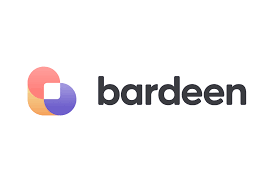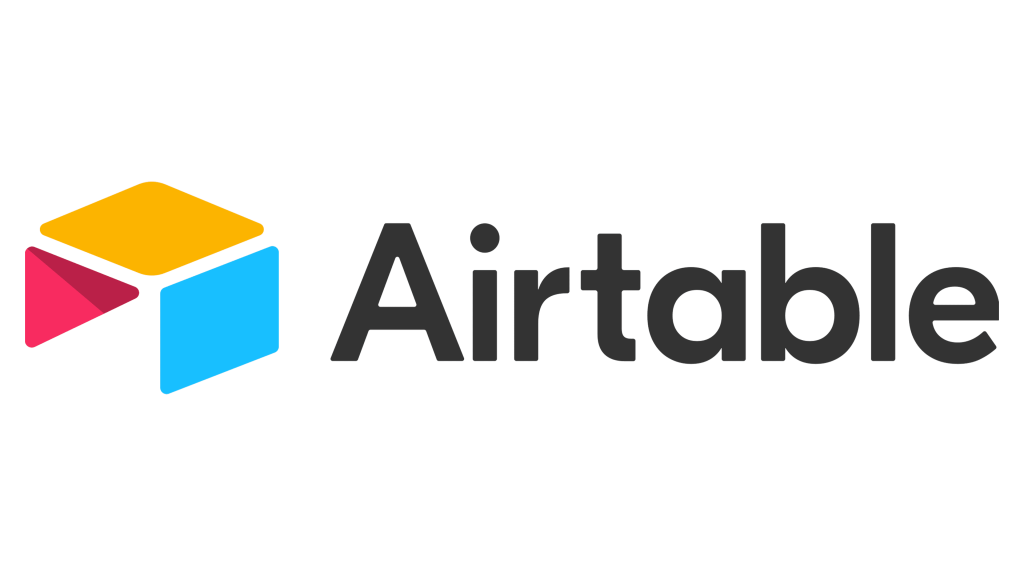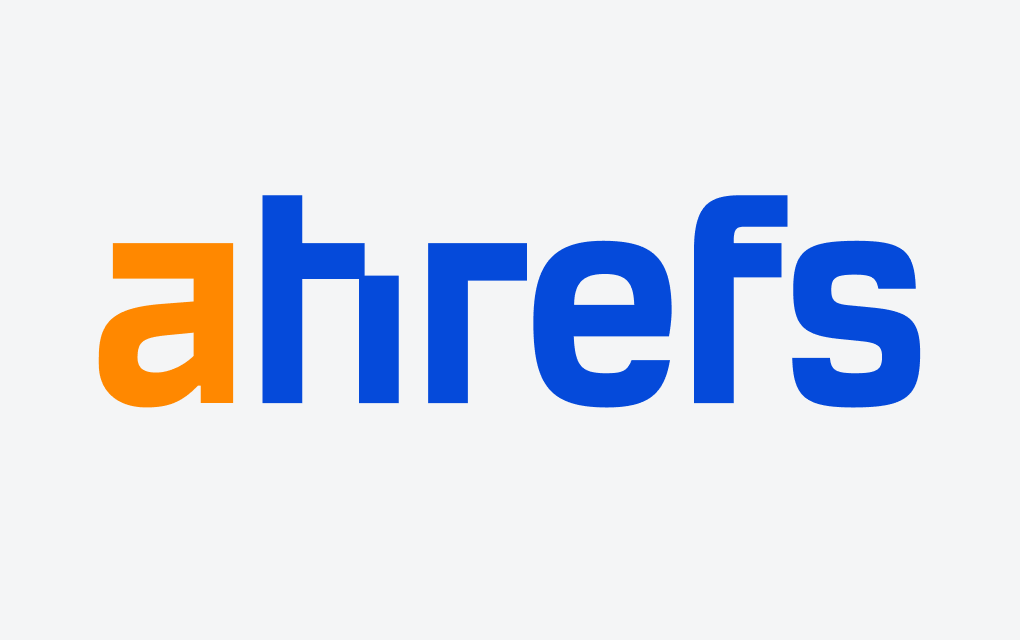The purpose of programmatic SEO is to create large-scale landing pages. The purpose of doing so is to target search engine result pages (SERPs) for ranking content. Pragmatic SEO is also referred to sometimes as pSEO. By using pSEO, companies can create thousands of website pages by publishing, designing, or writing manually. Popular examples of companies using programmatic SEO strategies include G2, Zapier, and Zillow. For addressing the search traffic growing amount, pragmatic SEO is considered very effective. SEO has significantly evolved over the years, thanks to increasing automation usage. This has resulted in improved productivity and efficiency. The role of automation is also an important one when it comes to achieving desired results and staying competitive within the SEO industry.

What is Programmatic SEO?
The method of programmatic SEO deals with large numbers of search traffic by publishing large-scale landing pages. The process includes the creation of landing pages for ranking in Search Engine Result Pages (SERPs). Whether regular or programmatic SEO, both of them function on the same principle. However, the aims are different when it comes to boosting the visibility of the websites through search engines. The process of regular SEO revolves around search engines and website visibility. It focuses on high-quality content as a long-term strategy for ranking it in search engines. Blog posts and landing page creation feature specific keywords as a part of a regular SEO strategy. However, things are different in this part while making a programmatic SEO strategy.
Compared to a regular SEO strategy, a programmatic SEO strategy seems much quicker while focusing on the same goal to achieve. In this process, SEO experts create multiple and similar layouts for landing pages, using automation, databases, and templates. Hence, with one template and one database, you can create thousands of pages. However, just like conventional SEO practices, these pages also involve specific keyword research.

How Programmatic SEO Works?
By using an effective programmatic SEO strategy, your brand can accomplish results much quicker. Multiple landing pages having an identical layout help them to get searched easily. This will assist in identifying ideal keywords related to programmatic SEO. With automatically created prototype pages, the developers also can communicate effectively taking your vision to the next level. Some of the key components that determine how programmatic SEO work
Include the following:
-
Low competition keywords
-
Search intent and
-
User experience

Programmatic SEO Tools
Everyone wants to see their organization progress and flourish. For this purpose, programmatic SEO tools can elevate your brand to new heights. Some of the most commonly used best programmatic SEO tools include Placid, Bardeen, WP All Import, Airtable, ChatGPT, and Ahrefs.

-
Placid
Placid is the first tool handy for automatically creating personalized images. As a tool focusing on programmatic SEO AI, it is ideally used in websites, articles, and social media content. If you are looking to add logos and text on a fly, these offer customized image templates.
Features
The noteworthy features of Placid include bulk creation capabilities, fully customized image layouts, and dynamic content insertion. You can add logos and text by using generated URLs for big content projects for making many images simultaneously.

-
Bardeen:
As an AI extension tool, Bardeen provides programmatic SEO agency services by automating workflow. These include HubSpot, Google Sheets, and Notion among other integrations. You can gather images, text, and links, by using it as a web scraping tool.
Features:
Bardeen is a tool for programmatic SEO AI with page information, manual automation, and text inputs. These features for automation from Bardeen include Magic Box, Playbooks, and Autobooks.

-
Airtable
As a cloud-based platform, Airtable is one of the programmatic SEO tools used by many people. These let you manage contacts, create databases, and track projects. It is very easy to use Airtable thanks to its drag-and-drop feature. You can include all sorts of data with its exclusive dataset. These include file attachments, text, numbers, checkboxes, time and date, and dropdown lists. Hence, you can push website pages with all-in-one data through bulk creation capabilities, fully customized image layouts, and dynamic content insertion. You can add logos and text by using generated URLs for big content projects for making many images simultaneously.
Features
The features of AirTable include performance tracking, customized forms, and tables. It also includes collaboration features, performance tracking, automation, integrations, and flexible views.

-
WP All Import
If you are looking for programmatic SEO WordPress, use WP All Import. As a plugin for WordPress automation, it helps you import from database data and create a page template.
Features
Key features of WP All Import include easy drag and drop allowing easy and quick process for tough imports. Furthermore, with versatile content import, you can import types of content from Excel, XML, and CSV files. Also, by using customizable data mapping, you can match your custom fields in WordPress with the data imported to allocate as per your will. You can also include options like automated scheduling and support for custom post types.

-
ChatGPT
OpenAI is the genius with the launch of ChatGPT, introducing it to the world as a model of a clever language. Content creators and SEO professionals benefit from this platform for automated data analysis, content creation, and improvement. Hence, ChatGPT is essential for easy organization, task automation, and content creation for your pages.
Key Features:
Some of the notable features of ChatGPT include content variability, content generation, keyword optimization, and natural language understanding (NLP). With the help of ChatGPT, you can create articles, blogs, and more. By combining manual and automated processes, you can create content that search engine loves. On the other hand, you can also use keywords as programmatic SEO ideas that help improve search engine rankings and visibility. People and search engines love natural content and for this purpose, ChatGPT is handy for Natural Language Understanding (NLP). Once you have finalized your content, you can also use proper prompts to test it. This way you can ensure that the content written boosts SEO performance and ensures that the content is not duplicated elsewhere within the search engines.

-
Ahrefs
The last tool that will help you know how to do programmatic SEO is Ahrefs. With this exclusive tool, you can master keyword research and learn to do it effectively. To find easy-to-rank keywords within specific modifiers, you can use a Matching Terms Report and a tool known as Keyword Explorer. Keywords within programmatic SEO consist of two parts i.e., modifiers and head terms. Modifiers add details, making content more specific. On the other hand, head terms are high-volume keywords, with a normal length of two words. However, such keywords are not easy to rank for. Thus, while doing programmatic SEO, ensure a long-tail keyword, which combines head term and modifier together. By using Ahrefs, you can find such keywords easily at scale. All you have to do is to export them simply into a CSV or any other file.
Key Features
Ahrefs consists of an extensive keyword database, helping you in researching all sorts of topics. If you have no idea about how to do programmatic SEO, then this exclusive tool can help you a lot. Whether you are looking for short-tail or long-tail keywords, you can find both with Ahrefs. Another programmatic SEO strategy for using the tools to carry out competitive analysis. Ahrefs lets you know about the competition for the keywords you are looking for. This way you can also find out the keywords that are performing best and those that are not up to the standard. You can also find out search difficulty and volume letting you know about the phrases that people are looking often for. It will also help you know whether it is easy to rank on a particular keyword or not. Last thing you can also carry out content gap analysis, in which you compare competitor keywords with yours.
Step-by-Step Process to Implement Programmatic SEO
After understanding how best programmatic SEO tools work, here are a few things to consider. With effective knowledge regarding the best programmatic SEO guide, you can improve your website’s ranking with the following:
If you want to provide the best programmatic SEO services, focus on identifying relevant keyword clusters and topics. This will help you in targeting programmatic content which you can accomplish with keyword research. It will help you look at and identify the search terms that the audience is looking for. You can create keyword clusters as a programmatic SEO strategy, identifying scaling opportunities for your content. Such keywords for WordPress programmatic SEO can be found at the bottom of the funnel. If you want to analyze such keywords, use programmatic SEO tools like SEMrush or Ahrefs. It will help you group these keywords in clusters once you have analyzed them.
-
Analyze Top Ranking Pages and SERP intent.
Upon identifying target keyword clusters, carry out analysis of Search Engine Results Pages (SERPs). This programmatic SEO strategy will help you figure out the intent of the searcher while looking for content ranked on the first page. For top-ranking pages, identify the target clusters of keywords. You need to review the structure and format and structure of the pages ranking at the top. You should look at the included elements and think of how they are addressing the query of search. Hence, it will give you an idea of how your content templates need to be designed.
-
Choose WordPress or Webflow for a Content Template
According to your analysis regarding SERP, choose and create a template that will help boost your programmatic SEO agency services. These include related links, meta description and page title, body content sections, H1 and subheadings, images and multimedia, and Calls-to-action. The template will determine every page the structure and the elements that need to be included with data. Tools will be WordPress and WebFlow making it easy for the templates of the design page without coding. For instance, Webflow is one of the best programmatic SEO tools, here is a simple template
-
Utilizing programmatic SEO tools
Following you have to organize and collect the data regarding how programmatic SEO works. As previously mentioned you will have created a spreadsheet or database with a row for every column and topic/keyword for several data points you may include. This assists you in automating the significant elements of SEO such as body, page, titles, and URLs. As a user-friendly tool for creating these kinds of databases, AirTable includes programmatic SEO strategies. These include call-to-action, primary keyword, meta description, page title, H1, Subheadings, Images, introduction paragraph, and body paragraphs.
If you are willing to do a more set up and a free option, a good alternative is Google Sheets. By creating different formulae combining data from diverse cells for the dynamic construction of the page elements. For instance, you can combine variables like category names and relevant keywords and others for generating optimized and unique titles. At the same time, you can generate URLs that are SEO-friendly by converting them into slugs from the titles. This is among programmatic SEO strategies for ensuring they are descriptive and concise. For a body copy, use functions for pulling in product descriptions, content snippets, or other details from your spreadsheet. Hence, by doing so, you can efficiently populate your respective pages with relevant information.
-
Generate and publish pages.
By connecting your data and template, you are good to go continuing with the programmatic SEO strategy. By connecting your data and template, you are good to go for generating the real pages. In case you are using the dynamic functionality of a page with CMS, all you have to do is simply click “Publish”. External automation tool such as Zapier allows you to set up a workflow. This will help you in creating a new page for every database row. Thus, by using this structure of template you can populate the available content.
-
Programmatic SEO Strategy for Adjusting and Tracking
Just like any kind of SEO format, programmatic SEO AI helps in the performance monitoring of the pages over time. Ahrefs and Google Search Console are ideal tools for tracking content decay, rankings for target keywords, Conversion rates, Bounce time and rates on page, and Organic traffic to programmatic pages. You can improve and iterate page content, based on the performance data. All you need to do is to use programmatic SEO ideas to identify the available opportunities. Adjust target keywords, update the copy, or add new sections according to what you are viewing.
Programmatic SEO for WordPress
With the introduction of WordPress programmatic SEO, the approach to automate tasks through search engine optimization is made possible. No longer do you have to carry out tasks manually, working for painstakingly long hours. Programmatic SEO for WordPress has evolved the process of search engine optimization to a significant extent. With the help of WordPress plugins,
Recommended WordPress plugins for programmatic SEO
If you want to boost your efforts related to SEO, then you should consider Programmatic SEO for WordPress. It does not matter when you are a business owner or a professional by using the following plugins, you can skyrocket your way to success. These are as follows:
-
WP All Import Plugin
Overview:
You can easily import CSV or XML files to your WordPress website by using the WP All Import plugin. As a plugin for programmatic SEO for WordPress, It integrates seamlessly with any plugin or theme.
Key Features:
There are many key features of WP All Import Plugin as a tool for programmatic SEO for WordPress. These are as follows:
- Drag & Drop Interface: makes your tasks fast and simple and overcomes complexity issues.
- Seamless Integration: You can manage WooCommerce, posts, custom post types, pages, and taxonomies.
- Developer-Friendly: for adding custom extensions and add-ons, use its API.
- Know more about the plugin of WP All Import.
-
Koala
Overview:
As an AI writer, Koala. sh can be integrated easily with WordPress. If you are looking for something special in writing, it is one of the best utilizing AI that can help you create automated Amazon roundups and product reviews.
Key Features:
- Create single product reviews and Amazon Product Roundups, post them to WordPress
- Write WordPress Blog Post to YouTube Video
- Rewrite blog post for the competition
-
MPG: Multiple Pages Generator Plugin
Overview:
The plugin for Multiple Pages Generator (MPG) is another example of a tool for programmatic SEO for WordPress. Through it, you can generate several pages based on a spreadsheet and a template. This powerful plugin creates product listings, location-based landing pages, and more.
Key Features:
- Create pages in Bulk: you can generate several pages in a few minutes.
- Customized URL Endpoints: Define your web page URL structure.
- Dynamic Content: populate page content by directly pulling the data from a spreadsheet.
Best practices Regarding Programmatic SEO for WordPress
Consider determining the optimization of the performance and speed of a website. Some of the steps that you need to take include establishing the following clear objectives and goals:
-
Determine your Aim:
The first thing to consider for programmatic SEO for WordPress is to determine your aim. To start off, you need to focus on the optimization. For this purpose, you need to know about the performance and speed of your website. Whether you are looking to accomplish better rankings in search engines or improve user experience, you need to have a clear perspective first. This will help you in guiding you to process your goal setting.
-
Content Performance Analysis:
To carry out effective programmatic SEO for WordPress, you can use a variety of tools. These include WebPageTest, Google Lighthouse, Google Search Console, and Google PageSpeed Insights. These will help you know about the performance and current speed of the website. Think of the areas that require improvements. These include the likes of high server response times, slow loading times, or excessive page weight. With these insights, you can set specific goals based on your priorities.
-
Prioritize Metrics:
Choose the performance metrics for your website that matter the most. Some of the common ones in this regard include interactive time, page load time, render start time, time to first byte (TTFB), and interactive time. You should purposefully align them to identify critical areas that need improvement the most.
-
Set Measurable Targets:
Set time-bound, specific, achievable, measurable, and relevant (SMART) goals. For instance, set a goal to achieve a TTFB of under 200 milliseconds or reduce page load time by 30% within three months. This will help you in providing progress benchmarks and clear targets for progress. Thus, you will not get carried away and continue focusing on your cause.
-
Expectations of User:
Consider aspects like browsing behavior and expectations of the target audience for better understanding. Every website has a different requirement based on the user base and the levels of optimization. Think about the aspects such as connection speeds, device usage (desktop vs mobile), and geographic location. These will accordingly tailor your goals.
-
Breaking it down:
Break goals of optimization for your website into actionable and smaller tasks. For example, implementing a content delivery network (CDN), optimizing image sizes, leveraging browser caching, or minifying JavaScript and CSS. To manage everything, consider breaking the process down into smaller goals. Hence, you can get incremental improvements which will help you achieve more by taking steps in a manageable way.
-
Iterate and Monitor:
The last step is regularly monitoring your website with website analytics or performance monitoring tools. This will help you identify areas of improvement and track the progress toward your goals. During programmatic SEO for WordPress, you can adapt to changing user expectations and technologies by iterating the strategies. This will help you determine the performance and speed of your website following all the practices related to optimization. All you need to know is to align your goals according to evolving needs, adaptability, purpose, and measurement of the website’s goals.
Programmatic SEO and AI
With the integration of programmatic seo ai, you can get transformative results. AI eliminates repetitive tasks and manual work in SEO. Thus, you can focus your attention on strategic and creative output. Such processes may include automation, keyword research, content creation, and topic analysis. But as compared to manual practices, these do it with proficiency and help you gain maximum leverage. As far as programmatic SEO is concerned, the inclusion of AI supercharges its process. Thus, you can optimize pages, analyze data for scaling, and generate content with proficiency.
Examples of AI tools that assist in programmatic SEO
-
LowFruits
Low Fruits is one of the perfect tools designed for programmatic SEO. Here you can find out easy to rank and low-competition easily.
-
Ahrefs
Ahrefs is one of the most popular tools designed for carrying out SEO practices. It is useful for keyword research. If you are looking for low-competition keywords, just go to Keyword Explorer and find a Matching Terms report.
-
SEMRush
SEMRush is just like Ahrefs and LowFruits which help you analyze and find modifiers and head terms. With this exclusive programmatic SEO AI tool, you can check the monthly volume of the search terms.
Future trends in AI and programmatic SEO
The introduction of artificial intelligence (AI) has revolutionized SEO considerably. However, it is too early to predict which direction the optimization journey will head towards. Programmatic SEO AI allows businesses to boost their visibility with the assistance of automation processes. Furthermore, when the website performance optimization is ongoing, at the same time, marketers continue creating personalized content.
Taking advantage of predictive analysis from AI programmatic SEO takes the process to a whole new level. Thus, it helps anticipate the needs of the customer and check on user behavior by identifying the trends. Moreover, programmatic SEO optimization can provide customer insights and track SERP listings. Hence, this helps companies to meet the customer demands in a better way. Companies can target PPC campaigns with specific keywords and improve organic rankings by using this data.
By having access to powerful tools and combining programmatic SEO and AI, companies can attract more customers and boost their online presence to a maximum extent. Hence, they can adjust their strategies quickly, as per SERP opportunities and changing market trends.
Programmatic SEO Strategies
-
Strategy #1: Long-tail keyword targeting to improve conversions
The first strategy for programmatic SEO is to target long-tail keywords. These help in boosting conversions. First, you have to target the right, long-term keywords. The reason for choosing long-tail keywords is because these are what the audience is looking for.
The next step is to interlink or create new landing pages that are based on quality and uniqueness. While choosing every page ensure that the information included in it is essential for the customers to find. For example, these may include flavor profiles brewing guides how-to guides, and equipment reviews. Besides that ensure that landing pages created are integrated seamlessly, complying with the architecture of the existing website, as perceived by the client.
Once the above process is carried out interlink new pages with a strategic approach. But while doing so, make sure that the content is already present on the site. This will help in guiding users and boost SEO for extra valuable information. Therefore, it will encourage the visitors to explore the site and also keep them engaged in the content.
Outcome
By implementing such a programmatic SEO strategy you can boost the overall conversion rate of the client to a considerable extent. The best part is that you may have a chance to gain this traffic via organic search. By focusing on long-tail keywords you can create engaging and valuable content while your metrics may see a considerable increase.
Strategy #2: Increase Local Visibility with Geotargeting
Whether you have an eCommerce store or otherwise, you can improve your website visibility with location-based SEO services. Thus, you can get relevant local customers that match the needs of your business based on location. If you undermine the option of local SEO, you may miss a huge opportunity to do business with local people.
Strategy #3: Programmatic Strategy For Product Pages
Programmatic SEO is the third strategy to use for product pages while working on an eCommerce project. While working with a client make sure that the competitor is not someone playing around. They can offer them better propositions with optimization techniques, long-tail keywords, and automated content generation. But it is up to you how you convince your clients and provide them with the value they are looking for.
Detailed discussion of various programmatic SEO strategies
-
Automation of content creation
If you want to stay relevant then consistency in creating content is not the only thing you need to focus on. But there are other aspects to consider as well including providing value and engaging the target audience. The process of content automation is very important for programmatic SEO and AI. If you are in the content creation industry, then you should know how to manage resources and time efficiently.
When it comes to pragmatic SEO, there are several advantages to creating content. Moreover, with the help of automation, you can increase the output of the content. For this purpose, you do not have to focus on increasing productivity or resources. Furthermore, you can get consistent with content creation through it. With the help of automation, you can handle everything including personalizing content for different segments of the audience to data analysis.
-
Dynamic Content Optimization
In programmatic SEO, you can include content optimization to your advantage. You can use tailored and personalized content for your website. Some of the aspects it includes are behavior, demographics, and interest.
-
Targeted Audience Segmentation
Targeted audience segmentation is a strategy for digital advertising that utilizes automated technology. This helps in delivering relevant and personalized content for particular audiences. It is important for marketers to enhance effectiveness, precision, and efficiency in engaging and reaching target audiences.
Tips for Developing An Effective Programmatic SEO Strategy
-
Define content templates and guidelines:
When automating your strategy with programmatic SEO, you must focus on establishing guidelines and templates for content. The establishment of content guidelines and templates is important for automation. With clear guidelines, you can ensure you get a variety of AI-related possibilities. The parameters of such content become editorial standards and brand voice. To maintain consistency throughout all content, define the style, structure, and tone of the articles.
-
Generate Content Outlines and Ideas
When you are dealing with automated content then outlines and ideas are its blueprints. Using tools such as Jetpack AI Assistant can help you discover the topics of the content that may not only be relevant to your audience but also easy for search engine optimization (SEO). In programmatic SEO AI, you should outline the content structure and its key points prior to its development. Hence, utilizing this process guides the AI to create content according to logical and coherent structure.
-
Use AI Content Creation Tool for Creating Content
An AI tool, for instance, Jetpack AI Assistant, helps you create content by laying the groundwork. With the help of this tool, you can draft several content types based on the provided input. The task is mostly carried out by AI, while with human oversight you can ensure it is relevant and high-quality. This way you can combine manual and automated processes to maximize the results.
Programmatic SEO Ideas
Creative Programmatic SEO Ideas to Enhance Visibility
-
Satisfy Search Intent With Updated Content:
Ranking on the first page of Google is something that everyone dreams of. However, many other reasons that lead to ranking your content higher. These are more than what you anticipate by manual approaches.
For the content to do the trick, your website needs to have built backlinks or overall authority. When it comes to choosing competitive niches, if another website covers the topic better than you, then you have a chance to rank better in that topic/subject. To ensure your website stays relevant in the search engines, you should update the content as a part of a programmatic SEO strategy.
-
Choose a Fresh Angle to Cover the topic:
The content is available in competitive niches and is now resembling one another. This may be because marketers make use of similar strategies and toolsets for “reverse engineering” their topics. However, it results in a unidimensional experience for the search engine users. To avoid this situation, search for unique and creative angles to intrigue the user viewing the search engine results.
-
Optimize Your Meta Description:
Meta tags are considered ineffective in influencing the rankings in the search engines. According to research by Ahrefs, Meta Description is written 62.78% time by Google. But the question arises whether it is worth trying to craft meta descriptions that make them compelling.
For drawing some extra clicks and standing out in the search results, meta descriptions do have a role to play. According to a study conducted by Ahrefs, many top-ranking web pages do not have a meta description. Thus, you have a chance to stay relevant by using meta-descriptions to establish relevance.
-
Integrate Multimedia in Your Content
Other factors that also count include domain authority, links, and comprehensiveness. According to Bing “short dwell times can indicate that the content is not capturing visitor’s interest” On the other hand, Google also uses dwell time and bounce rate to “feed their machine learning algorithms.”
-
Make It Comprehensive
Google along with many of the readers, like if you answer the queries related to the subject you write articles about. It eliminates the need for referring to any other source and gives them convenience for the same. Upon ranking for a particular keyword, think of subtopics that you may have missed. Then cover them by updating the article you wrote. By doing comprehensive coverage, you can rank for even more long-tail keywords on existing pages. The machine-learning algorithm of Google associates between entities and keywords for establishing relevance.
-
Examples of unique content strategies
With the help of a unique content strategy, you can execute a blueprint. For this purpose, you can include the details that have many aspects. Utilize all the necessary information for good-quality content creation. Some of the deliverables for effective content strategy include Keyword Research, brand Voice, Product Messaging, Ideation Process, Persona (Audience), Content Calendar / Content Cadence, Competitive Analysis, (Content Promotion Plan) / Content Distribution, and Operations Process. Besides these others include Benchmarks – Goals, and Style guides, Recommended Content Types (based on performance metrics), and Influencers and Subject Matter Experts (SMEs).
-
Encouraging experimentation with different tactics
Track Essential Metrics
By tracking such metrics, you can fine-tune and successfully measure your approach.
-
Organic traffic and rankings:
Closely watch the website’s organic traffic and how your pages rank with the target keywords. By implementing programmatic SEO, you can target several longtail keywords. Thus, see which ones of them are driving crucial traffic.
-
CTR:
The next essential metric to track is CTR which lets you know whether meta descriptions and titles are up to the mark or not. You need to spice up and revisit them if people are not clicking through your site. With programmatic SEO can generate several pages. The high CTRs indicate consistently that your content automation is according to the situation.
-
Time on site and Bounce rates:
Low time on site and high bounce rates may let you realize that your content is not up to the target. By focusing on programmatic SEO, you can ensure that even automated content is engaging and relevant. Monitor these metrics closely to adjust your templates according to user behavior.
Conclusion
It is wrong to perceive that regular SEO is now replaced with programmatic SEO. Both of these approaches can combine and work with each other. Remember whether you are working with SEO, pSEO, or both, you need to conduct strong keyword research first. For this purpose, you can take advantage of several tools mentioned above in this blog.

